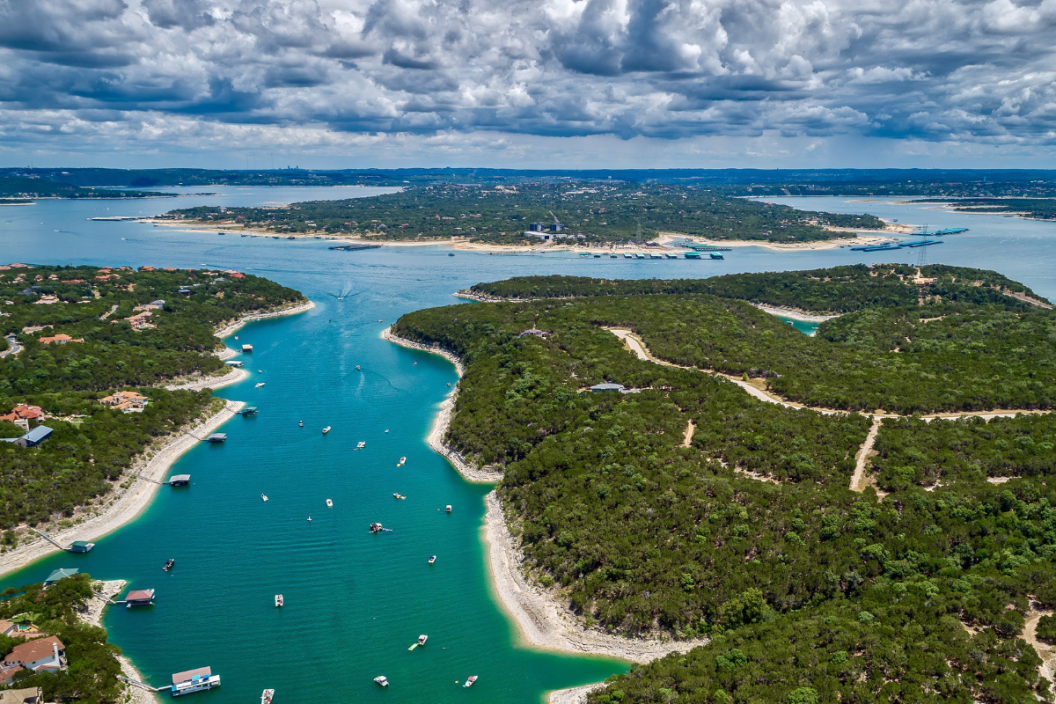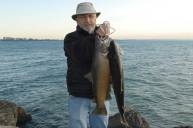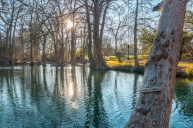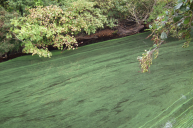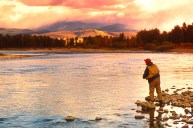The city of Austin, Texas is (seemingly) ever-changing in the heart of Travis County. It's a place where Texans bleed burnt orange, and they're joined by thousands of transplants from around the world, flocking for a taste of a city considered one of the best to live in the United States.
Along with Lake Austin, Lake Travis regularly acts as the center of aquatic party life in Texas Hill Country. Though lake levels and average depth leave aspiring boaters at the mercy of 110-degree summers, its 271 miles of shoreline offers no shortage of picnicking, sunbathing, scuba diving, and some of the most breath-taking real estate you'll find. It's a year-round oasis hiding in plain sight through both Travis and Burnet County. But before you prepare to set out, check out this list of 10 facts you might not have known about Lake Travis.
10. Lake Travis isn't a lake; It's a reservoir.
https://www.instagram.com/p/CHa6-uAlxYb/
Construction began on Mansfield Dam in 1937 and was completed by 1941. It was built by the Lower Colorado River Authority (LCRA) and The Texas Legislature to hold floodwaters flowing from the upstream Colorado River basin to serve as a local water supply.
9. Traffic used to drive over the dam itself.
https://www.instagram.com/p/B-IXIwFhs7V/
Before the 620 bridge was built, traffic crossed a narrow, two-lane highway over the actual dam. It wasn't long before the popularity of the lake necessitated the construction of a four-lane highway which is what we currently cross to get to the lake. The old road is now closed to through traffic, and only used for maintenance vehicles.
8. There are some monsters out there.
https://www.instagram.com/p/CHdb-WZA4-E/
According to Texas Parks and Wildlife, the current record holder for largest fish caught in Lake Travis was a 54.78 lb flathead catfish caught by T. Bennet Sansom in March, 2007. (The fish pictured is not the record-holding fish.)
Fishermen (and women!) flock to Lake travis in hopes of landing largemouth bass, white bass, striped bass, catfish, sunfish, and Guadalupe bass — The latter of which is Texas' state fish!
7. It provides both water and electricity.
https://www.instagram.com/p/CBQaO_8pNKV/
Not only does the lake serve as a water resource for central Texas, and a floodwater reservoir, Mansfield Dam is a hydroelectric dam that generates electrical power for the area. The dam has three turbines that, when filled to capacity, can generate 108 megawatts of electricity.
6. Lake Travis can hold... lots of water.
https://www.instagram.com/p/CHOkyEcn0kd/
When the lake is filled to its spillway elevation at 714 feet, it can hold 626,691,999,536 gallons of water. For those of you who don't want to read that enormous number, it's over six hundred billion. However, the lake has never reached that elevation. The highest recorded water level it's reached was 710 feet in December of 1991.
When water levels are stable, boat ramps are overrun with swimmers and watercrafts heading in for a day on the lake.
5. There's a nude beach!
https://www.instagram.com/p/CFFxYzcjxnv/
Most new Austinites are treated to a host of jokes about Hippie Hollow from the natives, but if you don't live here, maybe you don't know how weird we can really get. Hippie Hollow is a 109-acre area on the shores of Lake Travis that is clothing optional (read: nudist). If you've seen pictures of Devil's cove and you're thinking hubba-hubba right now, cool your jets, man. They offer Senior (and I don't mean student) discounts. It's said to be a place for peaceful nature-lovers.
4. Some still know the dam as Marshall Ford.
https://www.instagram.com/p/CB4cRAEF_CM/
When the dam was first built, it was built on an old river crossing and settlement known as Marshall Ford. The name of the dam was changed to Mansfield Dam in 1942 to honor United States Representative J.J. Mansfield, who aided in the completion of the project. The Army Corps of Engineers, for some reason, still refers to it as Marshall Ford though.
3. You can thank devastating floods for its construction.
https://www.instagram.com/p/CGSi8sLFVvu/
In the early part of the 20th century, the Colorado River was constantly flooding, causing catastrophic property damage to nearby farms, as well as great loss of human and animal (livestock) life. The U.S. Department of the Interior then created the Lower Colorado River Authority (LCRA) to address the issues surrounding the river in central Texas, and the reservoir was built to ease this flooding.
2. Lyndon Johnson helped to create it.
https://www.instagram.com/p/BmqmdAiFuX2/
At the time of the construction of the dams that created what are now known as the Highland Lakes (Lake Travis, Lake Buchanan, Lake Marble Falls, Lake LBJ, Inks Lake, and Lake Austin) the future president of the United States was a Texas Senator who lobbied that the hydroelectric energy generated by the dams would be a boon to the Texas economy. Lake Granite Shoals was renamed Lake LBJ in honor of his efforts.
1. There are no lakes in Austin, Texas.
https://www.instagram.com/p/B-Z1GA6FZTf/
Not natural ones, anyway. All the Highland lakes are actually dammed-off reservoirs of the Colorado River. Also, all the lakes are connected. It might not seem so when driving from one dock to another, but the bodies of water that create Lake Austin and Lake Travis, for example, are separated only by the Mansfield Dam.
